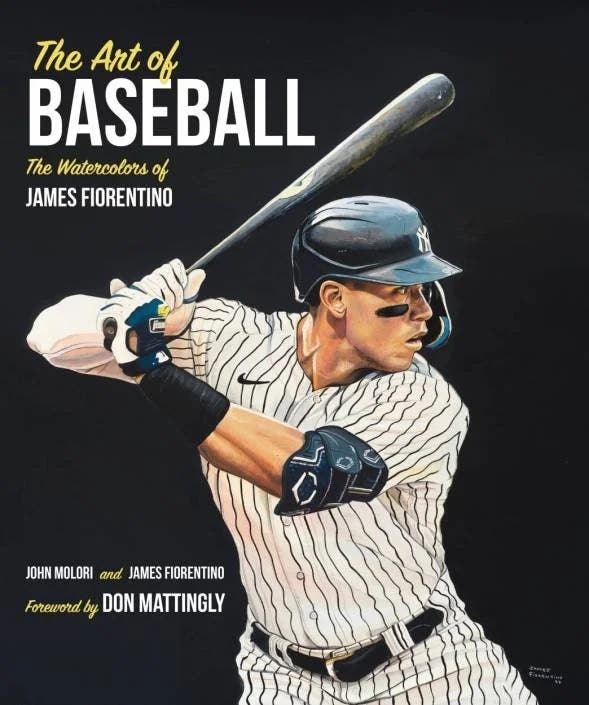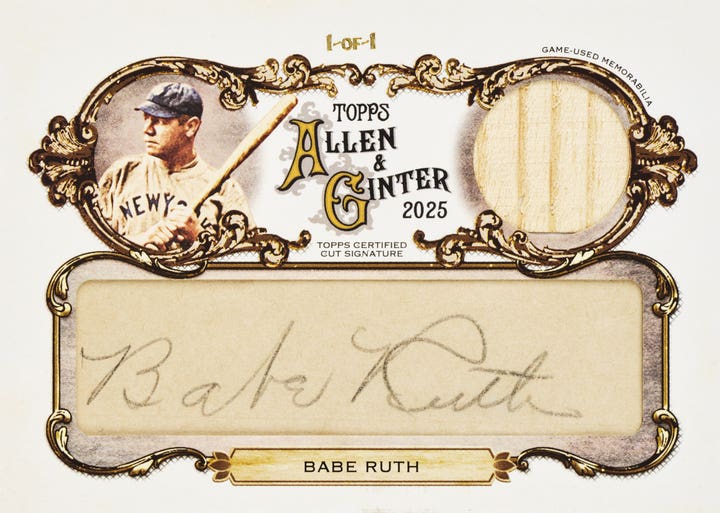News
American Legion’s 100th anniversary celebrated by Baseball HOF
By Paul Post
One of the newest bats in the National Baseball Hall of Fame’s collection was never used to win a pennant, record a 500th home run or 3,000th hit.
But it pays tribute to one of the world’s largest veterans organizations and the many Hall of Famers who served their country in the United States military.
State and national leaders of the two million-member American Legion converged on Cooperstown recently for an event honoring the Legion’s 100th anniversary and its contributions to youth baseball.
“In this room, the most sacred space in the game of baseball, we’re surrounded by 329 members of the Hall of Fame,” said Jon Shestakofsky, Hall of Fame vice president for communications and education. “Of those, 81 were shaped by American Legion baseball, one-quarter of the all-time greats represented on these walls.”
The list includes four of this year’s inductees -- Roy Halladay, Mike Mussina, Harold Baines and Lee Smith. Smith, who joined the festivities, credited Legion baseball for making his path to Cooperstown possible.
“American Legion baseball really started my career as far as understanding the game and why coaches do certain things, like the hit and run, and learning how to read the bat, who has good bat speed,” he said. “It was a real learning experience for me. I’m really glad to hear American Legion baseball is still here. It’s really needed because a lot of people overlook sound fundamental baseball.”
He also credits local men, who served in the military, for teaching him valuable lessons about the discipline, hard work and determination needed to succeed. But his favorite aspect of Legion ball was the camaraderie of teammates, which he still considers family. In fact, he’s already invited his now 87-year-old former coach, James Morgan, and best friend and Legion catcher, Charles Cockfield, to join him on Induction Weekend, scheduled for July 19-21.
“When we played, the whole team, the whole family — not just the players — went to a restaurant called the Cotton Patch,” Smith said. “We talked about the game and families got to meet each other. That’s why I say, I don’t have teammates I have family members.”
On the diamond, Smith was one of the most feared relief pitchers the game has ever seen. At the time of his retirement, he had saved the most games in major league history (478), a mark now held by fellow reliever Mariano Rivera who is also slated for induction this year.
Smith held the all-time saves record for 13 seasons before Trevor Hoffman broke it in 2006. Today, Smith still ranks No. 3 all-time behind Hoffman and Rivera.
He pitched in 1,022 games and the 802 games he finished was also the top career total at the time of his retirement. He won three Rolaids Relief Man awards and holds the National League record of 546 straight games pitched without a fielding error.
A seven-time All-Star who finished in the Top 5 of his league’s Cy Young Award voting three times, Smith led his league in saves four times and topped the 30-save mark in 10 seasons.
Born on Dec. 4, 1957, Smith can’t help marveling about where he came from, a rural Louisiana town so small it didn’t have a red light; and where he’s headed, soon to join baseball’s most legendary players.
He said life has been somewhat crazy since being elected to the Hall.
In many ways, he still can’t believe it’s happened.
“I told Billy Williams that. He told me, when you get on the bus from the Otesaga Hotel in Cooperstown and take the ride to the Induction Ceremony with other Hall of Famers, that’s when it’s going to hit you,” Smith said.
Off the field, he’s a good-natured gentle giant who enjoys a good laugh, even when poking fun at himself. For example, he likes telling the story about a monster home run that Hall of Fame Twins outfielder Kirby Puckett once hit off him.
“Kirby hit a mammoth home run off me in Minnesota. Bob Stanley was my setup man. He came up to me with a baseball in his hand and said, ‘Hey, Smitty. How’d you hold that one?’ He said, ‘I want to make sure I don’t ever grip the ball like that,’” Smith said smiling.
He also told about his initiation to the big leagues as a young Cubs rookie.
“We were on a 10-day road trip to California and they bought me a short-sleeved yellow leisure suit and real high shoes, three to four inches high,” Smith said. “Every time I left the hotel room I had to wear this outfit. Needless to say I didn’t leave the hotel room very much. When we got back home to Chicago all the players had to go through the airport and I threw a shoe. One of my heels came off. So there I was limping through O’Hare Airport with one shoe and a yellow leisure suit.”
“That had to be the top of the list right there for most embarrassing moments,” he said, laughing.
On the mound, though, he was all business, which also goes back to his days as a young Legion player.
“American Legion baseball doesn’t pick you because you can afford to travel,” Smith said. “They take you because of how good you are and whether you can play the game.”
“The one thing I learned so much from my coach was to go out there and put your best foot forward and don’t second guess yourself,” he said. “If you go out and do the best you can, there’s no way anybody else can second guess you. And you’ve got to work hard. It’s not going to be given to you. Those things were instilled in me by American Legion baseball. It really was an honor to put that uniform on.”
A small army of Legion officials were on hand for the Hall of Fame event including National Commander Brett P. Reistad, of Virginia, and New York Department Commander Gary Schacher.
Schacher presented Hall of Fame official Scot E. Mondore, an army veteran and Legion member, with the commemorative bat, which includes a handsome dark blue, gold and white medallion imbedded in the wood, with the Legion motto: “Veterans Still Serving America.”
The American Legion was formed shortly after World War I in Paris on March 15, 1919 by a small group of U.S. officers who saw the need for an organization to support those who had served during the war. The group included Lt. Col. Theodore Roosevelt Jr., the president’s son.
Reistad touted the Legion’s many contributions and work on behalf of veterans throughout its history. After World War I, it was directly responsible for approval by Congress of the U.S. Veterans Bureau, the forerunner of today’s Department of Veterans Affairs, which has medical facilities throughout the country and provides many other services.
During World War II, the Legion successfully fought for passage of the G.I. Bill, which gives veterans education benefits, home loans and assists with small business startups.
“Legion baseball started in South Dakota in 1925 and has flourished over the years,” Reistad said. “It’s a mainstay of The American Legion program. Legion baseball isn’t just about playing sports. It’s about sportsmanship, physical fitness, learning to work as a team. Many of those who played American Legion baseball made their way to this coveted location.”
Past National Commander David K. Rehbein, of Iowa, is chair of the 100th Anniversary Observance Committee.
“I grew up in Nebraska and went to one of those little one-room country schools where the library was smaller than your closet,” he joked. “One of the people I met in that library was named Lou Gehrig. That provided me a role model to look up to.”
Rehbein now lives near Bob Feller’s hometown of Van Meter, Iowa, where a museum dedicated to the Hall of Fame pitcher’s career is located.
“But Bob was more than just a great baseball player,” Rehbein said. “Bob was a veteran. He saw the need when his country called him. Like many of us, he gave up part of his life, but then came back and picked up where he left off.”
During festivities, Hall of Fame guests could visit the gallery where plaques are located, and take guided tours highlighting players who served in the military and the equipment they used.
Some Hall of Famers witnessed some of history’s most important battles. Yankee catcher Yogi Berra, for example, took part in D-Day, the invasion of Normandy on June 6, 1944, whose 75th anniversary was observed this year.
A special emblem is placed beneath the plaque of every Hall of Famer who served their country.
Ted Williams missed three full seasons (1943-45) in the prime of his career during World War II, and most of 1952 and ’53 when he returned to action as a U.S. Marine fighter jet pilot in the Korean War.
A special Operation Gratitude was also held during the Legion event, giving Hall of Fame visitors a chance to thank military personnel and veterans by writing letters of appreciation to them.
Schacher, the Legion’s New York state commander, admired all the Hall of Fame plaques and recalled many of his favorite baseball memories.
“The Yankees in the early seventies were my team,” he said, smiling. “I loved Bobby Murcer. As a kid, I used to keep a little AM transistor radio under my pillow, listening to the games at night. I grew up outside of New York City so I would go down quite often to Yankee Stadium. When I got a little older I’d sit in the right field corner where they held the Reggie (Jackson) signs. And right after I got released from active duty in the Navy, in 1983, I went to the July 4 game and got to see Dave Righetti throw a no-hitter against the Red Sox.”
“This is just great to be here with veterans and baseball fans,” Schacher said, smiling.
Paul Post is a freelance contributor to Sports Collectors Digest. He can be reached at paulpost@nycap.rr.com.








